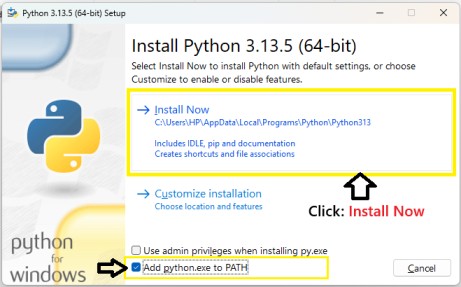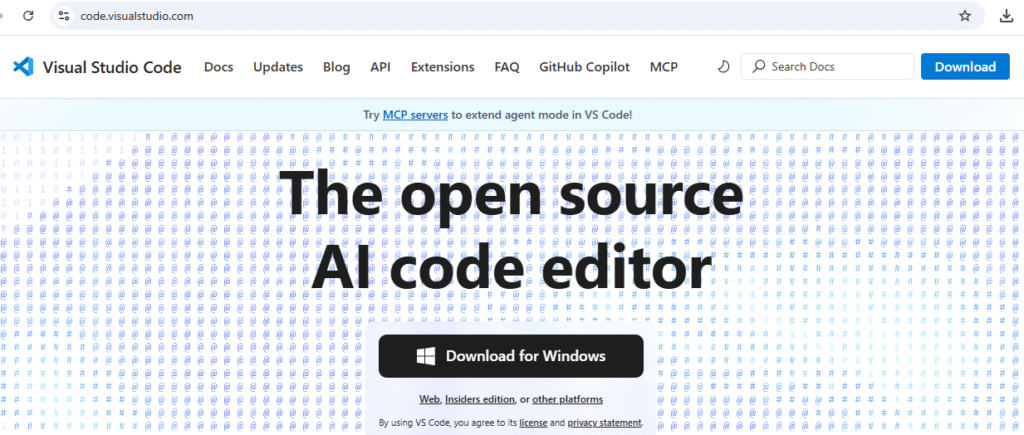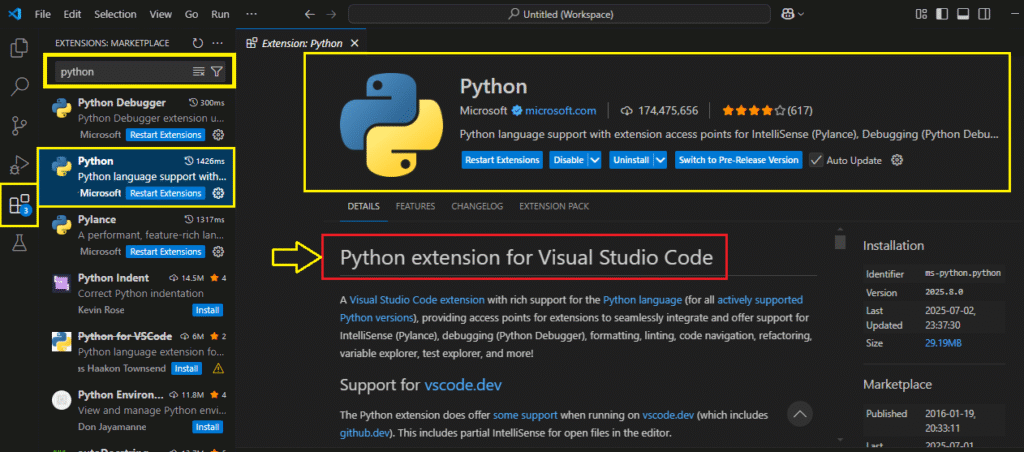Learn how to setup for Python on your computer step-by-step. This beginner-friendly guide covers installing Python, setting up VS Code, and writing your first Python program.
Are you ready to start your Python journey? Great! But before you can write your first line of Python code, you need to set up your system properly. Don’t worry — it’s easier than it sounds, and I’ll walk you through everything in a simple, human-friendly way.
Whether you’re using Windows, Mac, or Linux, this guide has you covered.
What Do You Need?
To begin coding in Python, you need two things:
- Python Interpreter – This runs your Python code.
- Code Editor or IDE – This is where you write your code.
We’ll install both — starting with Python.
Also Read: Introduction to Python
Step 1: Download and Install Python
Python is free and open-source. The latest version (as of now) is Python 3.13.5 Always go for Python 3, as Python 2 is outdated.
Download Python
Go to the official Python website:
👉 https://www.python.org/downloads
Here, it will automatically detect your operating system. Click on the Download Python 3.x.x button.

For Windows Users
- Run the downloaded installer.
- Important: Check the box that says “Add Python to PATH”.
- Click Install Now.

Wait for the installation to complete. Once done, you’ll see a success message.
For Mac Users
Python 3 comes pre-installed on newer Macs, but often it’s not the latest version. So, it’s better to install the latest manually using:
- The installer from python.org
- Or via Homebrew:
brew install python
For Linux Users
Python is already installed on most Linux distributions. You can update it using your terminal:
sudo apt update
sudo apt install python3Step 2: Check Python Installation
Let’s confirm if Python is installed properly.
On Windows/Mac/Linux:
Open your terminal (Command Prompt or PowerShell for Windows, Terminal for Mac/Linux) and type:
python --versionOR
python3 --versionYou should see something like:

If it shows an error, go back and make sure Python was added to PATH correctly.
Step 3: Install a Code Editor
Now that Python is installed, you’ll need a code editor to write and run your Python code.
Best Option: VS Code (Visual Studio Code)
VS Code is light, fast, beginner-friendly, and free. Here’s how to set it up:
- Visit: 👉 https://code.visualstudio.com
- Download and install VS Code for your operating system.
- Once installed, open VS Code.
- Go to Extensions (on the left sidebar).
- Search for Python and install the extension by Microsoft.


Alternative Editors:
- Thonny – Built for beginners. Comes with Python pre-installed.
- PyCharm – Powerful IDE, but heavier. Great for advanced work.
Step 4: Write Your First Python Program
Let’s test everything with a simple program!
In VS Code:
- Create a new folder (e.g.,
python_projects). - Inside it, create a new file called
hello.py. - Open it and type:
print("Hello, SmartTejas!")- Right-click on the file and select Run Python File in Terminal
(You need the Python extension installed for this)

You should see:
Hello, SmartTejas!If you see this — congratulations, your Python setup is complete! 🎉
Optional: Use Python from the Command Line
If you want to run a Python file using the terminal, navigate to the folder where your .py file is saved and run:
python hello.pyOr on some systems:
python3 hello.pyBonus: Install pip and Virtual Environment (Optional for Now)
Python comes with pip (Python’s package installer). Try this:
pip --versionThis confirms if pip is installed.
To manage project dependencies separately, you’ll later use virtual environments:
python -m venv envWe’ll cover this in a later tutorial.
Final Thoughts
That’s it! You’ve successfully installed Python and a code editor, and even ran your first Python program. 🎉
Take your time with this setup — once you’re done, you’re ready to explore the exciting world of Python programming.
In the next tutorial, we’ll dive into writing actual Python code, learning variables, data types, and more.
👉 Stay tuned and keep learning with SmartTejas!
Quick Recap
| Step | What You Did |
|---|---|
| 1 | Downloaded & Installed Python |
| 2 | Verified Installation via Terminal |
| 3 | Installed a Code Editor (VS Code) |
| 4 | Wrote and Ran First Python Program |
What’s Next?
In the next post, we’ll learn about the Python Variables and Data Types